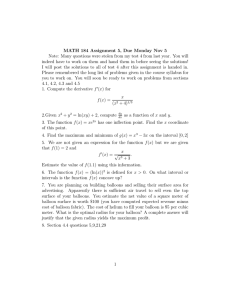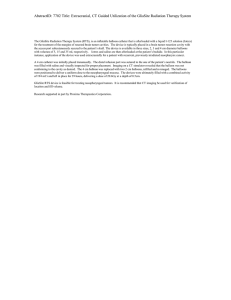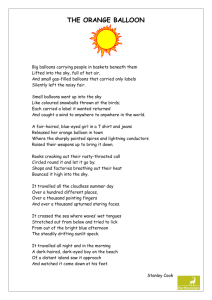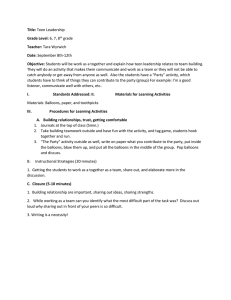Balloon Problems
advertisement
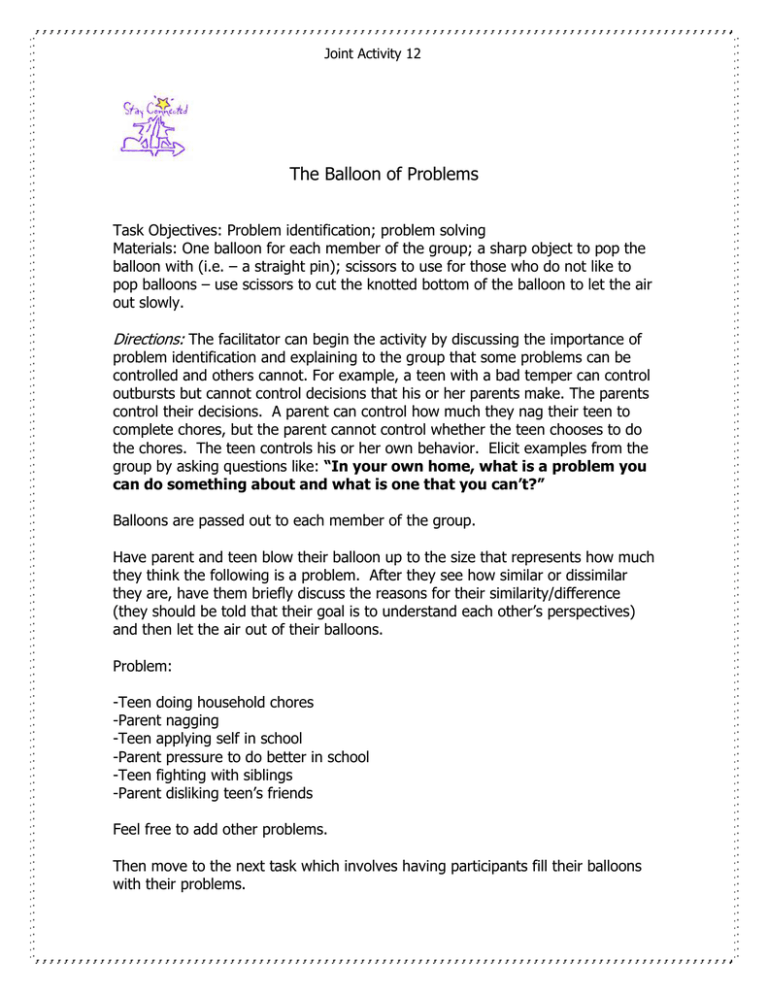
Joint Activity 12 The Balloon of Problems Task Objectives: Problem identification; problem solving Materials: One balloon for each member of the group; a sharp object to pop the balloon with (i.e. – a straight pin); scissors to use for those who do not like to pop balloons – use scissors to cut the knotted bottom of the balloon to let the air out slowly. Directions: The facilitator can begin the activity by discussing the importance of problem identification and explaining to the group that some problems can be controlled and others cannot. For example, a teen with a bad temper can control outbursts but cannot control decisions that his or her parents make. The parents control their decisions. A parent can control how much they nag their teen to complete chores, but the parent cannot control whether the teen chooses to do the chores. The teen controls his or her own behavior. Elicit examples from the group by asking questions like: “In your own home, what is a problem you can do something about and what is one that you can’t?” Balloons are passed out to each member of the group. Have parent and teen blow their balloon up to the size that represents how much they think the following is a problem. After they see how similar or dissimilar they are, have them briefly discuss the reasons for their similarity/difference (they should be told that their goal is to understand each other’s perspectives) and then let the air out of their balloons. Problem: -Teen doing household chores -Parent nagging -Teen applying self in school -Parent pressure to do better in school -Teen fighting with siblings -Parent disliking teen’s friends Feel free to add other problems. Then move to the next task which involves having participants fill their balloons with their problems. Joint Activity 12 To fill the balloon with problems, each person blows up his or her balloon - using one breath to represent each problem they are experiencing in their life. Facilitators can cue the participants by saying: “It may be problems with parents/children, other family members; it might be problems with work, school, friends, or the law.” If a teen/parent has only one or two problems, they should blow those problems into the balloon over and over again. Eventually each group member should blow up his or her balloon to capacity and tie into a knot. Once all the balloons have been blown up, the facilitator instructs participants to hold their balloons with two hands, placing their palms flat against the balloon. Then the facilitator tells them to keep both hands on their balloons and pick up a pencil. Now holding the balloon and a pencil, the facilitator tells the participants to also pick up a piece of paper. Now holding all these things, the participants are told to pick up a book, and then another book (and any other available items). After participants struggle a bit, tell them they can put the items down. The facilitator acknowledges that this is hard if not impossible, just like it is hard in real life to deal with tasks in our day-to-day lives when we hold onto a lot of our bad feelings. The facilitator says that one way s/he gets rid of stress and bad feelings is to _________ (say what you do: read, run, listen to music, talk to a friend) and then asks how the participants get rid of stress in their own lives. After the participants share their ideas, point out that there are many good ways to reduce stressful feelings. Conclude the activity by having the participants either: pop their balloons, gradually let the air out of their balloons. Tell participants that this symbolizes releasing their stress! Goes with Parent and Teen Goal 7
